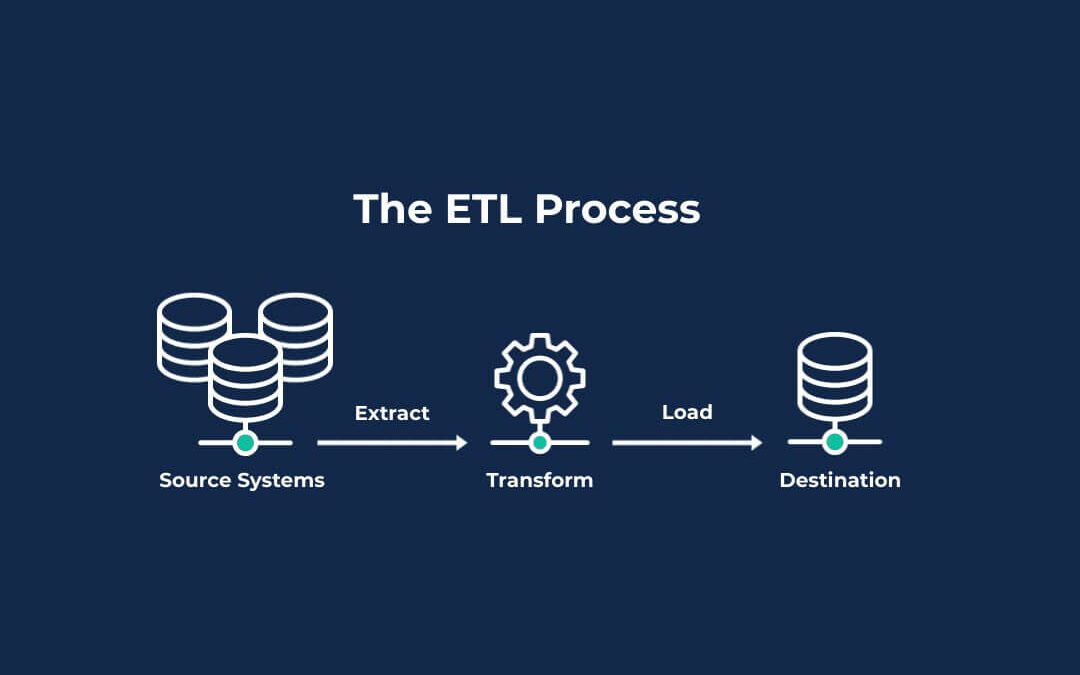Although it is a common term in some IT circles, you may not be familiar with its significance. So, what is ETL? What is ETL used for?
Businesses have had to deal with the explosive growth of data for decades. To remain usable, it’s critical that all of this data gets extracted from an ever-expanding number of source systems and transformed to become available in a single usable location.
If you work in business and are familiar with the data flow process, it is likely that you are aware of the term “ETL.” An essential resource for many businesses, ETL is vital for data integration. Whether you’re familiar or not, read along to learn more about the ETL process.
What Is ETL?
ETL is the acronym used for the data management process encompassing the 3 steps of Extract, Transform, and Load. The ETL process can get broken down into three phases. The steps are distinctive but interwoven with one another.
Extract
Data gets extracted or read from its initial source. It is possible to extract large amounts of data from many sources at once, and the data can either appear unstructured or structured.
Transform
Considered the most important phase of processing, transformation involves extracted data going through a data cleansing process. This ensures that it is in the correct format for your business.
During the transformation phase, many rules get applied to ensure that it is operational.
Load
Once transformed, data gets written or loaded into a centralized target system. In one location, it becomes more accessible. Loading can happen all at once or incrementally.
What Is ETL Used For?
Data Warehousing
ETL processes allow for data to be available to all business teams once they are loaded to their final location. Business teams are then able to use utilize their data analytics tools.
Online Migration
Cloud ETL tools make it possible for data transformation to get completed within the cloud. The process is cost- and time-effective, and it allows for quick data insights.
Consumer Market Data Integration
eCommerce data can get collected and combined from a variety of sources. This data gets analyzed and businesses utilize it to further their customer experiences, enhance their personalization, and boost their networking.
Why Is an ETL Tool Necessary?
It is critical that all business data gets formatted and prepared properly. An ETL tool can perform many functions for a business.
Productivity
Data from multiple sources gets consolidated automatically, removing the need for manual data entry. With the need for manual work decreased, businesses can be more efficient in their work.
Capability
ETL tools are able to handle large amounts of complex data effortlessly. Being able to access condensed and simplified data allows a business to evaluate and disclose information efficiently.
Decreased Errors
The process of manual data management can often see cyclical errors occurring. With reduced manual interference, ETL tools allow for improved data certainty and audit capacities.
Heightened ROI
A business’s Return on Investment (ROI) is greatly enhanced, as access to finessed data allows for better business decisions. Through having a clear understanding of the data, a business can gain a deep context of their data and use it effectively.
Types of ETL Tools
With several ETL tools on the market, it can be difficult to know which ones will get the job done. There are many business concepts that require consideration, and each type offers different functions.
Batch ETL Tools
Batch ETL tools use batch processing to transform raw data before loading it in batches, too. These tools can be cost-effective, as they require very few resources but provide efficient data in a timely manner.
Real-Time ETL Tools
Real-Time ETL tools are common in businesses requiring transformed data in a short time period. Waiting for feedback and transformations can be very time-consuming, but real-time tools allow quick access and enhanced data insights.
On-Premise ETL Tools
On-Premise tools provide a business with data security as the whole ETL process gets undertaken on-site. This is often preferred among companies, as they know exactly where their data is.
Cloud ETL Tools
Cloud ETL tools allow all data types to be directly uploaded to a cloud data warehouse. Businesses are afforded flexibility and agility in their data management processes, as they can access their data whenever and wherever they like.
Open-Source ETL Tools
Open-Source ETL Tools are the cheapest alternative to high-end ETL tools, making them a popular choice for many businesses. However, such tools can find it challenging to deal with complexities in data and, due to their uniqueness, it can be difficult to find extra support for their handling.
Choosing the Right ETL Tool
There is a lot to consider when it comes to choosing the correct ETL for your business. We have had great success in helping businesses improve their ETL management. Here are a few things to consider.
Congruence
It is vital that an ETL tool can connect all sources of data throughout a business. This congruency means that data is able to get sent to, and accessed from, any system.
Simplicity
Sometimes simplicity is key. Having an ETL that can be easily navigated means that it can get used reliably and consistently. Time can get saved through easy set-up too, as there will be no need for specialist help.
Scalability
ETL tools must handle the amounts of big data entering a business system efficiently. Performance optimization is key in ensuring that a business gets to grow, too.
Handling of Errors
An ETL that can effectively handle errors allows for accurate and consistent loading of data. The correct handling of errors means that all data gets protected and nothing gets lost.
Data Accessibility
It is imperative for business success that they have up-to-date and accurate data available. An ETL tool should provide a business with real-time insight and provide real-time updates through built-in monitoring.
Don’t Miss Your Opportunity
We are available to help you with all things ETL and can provide further information to the question of “what is ETL used for?”
Contact our senior business intelligence team today for your free discovery call and get expert help in improving what you are able to get from your data with the correct ETL development.



